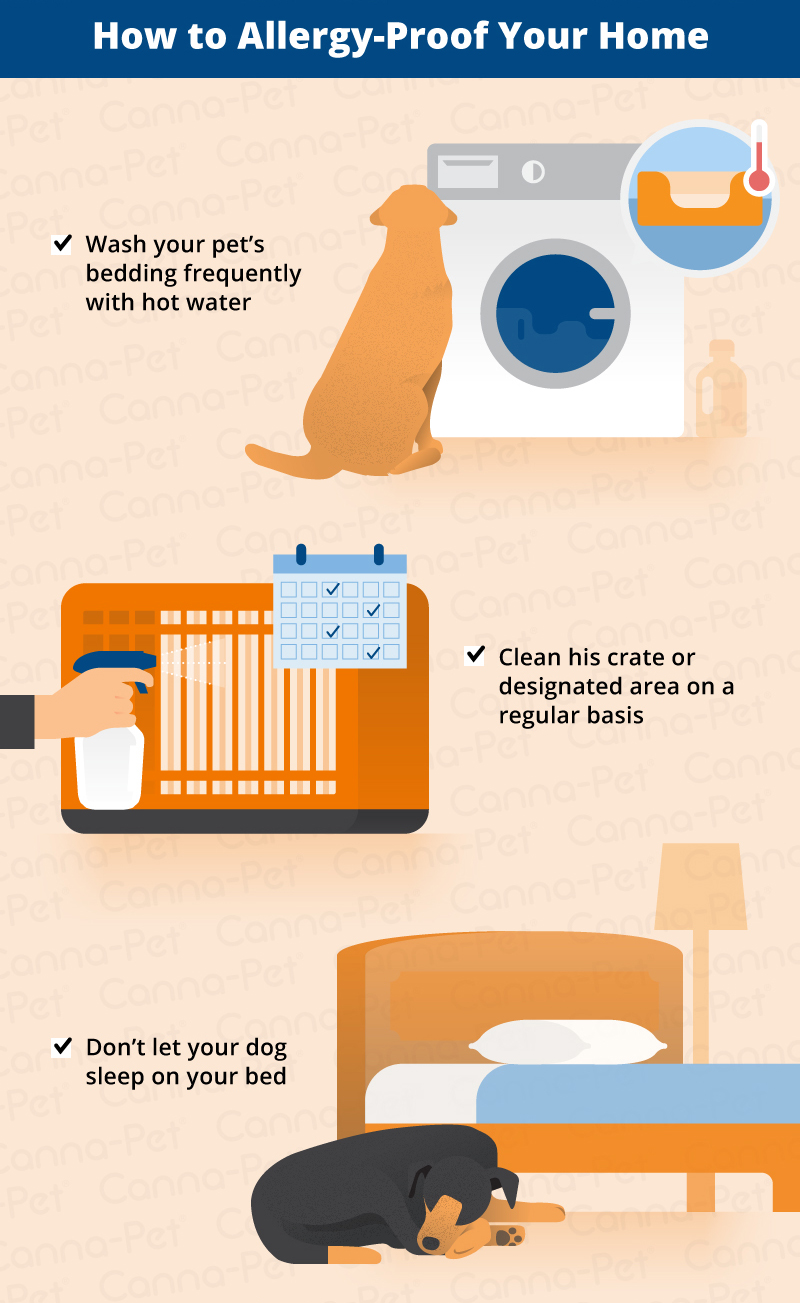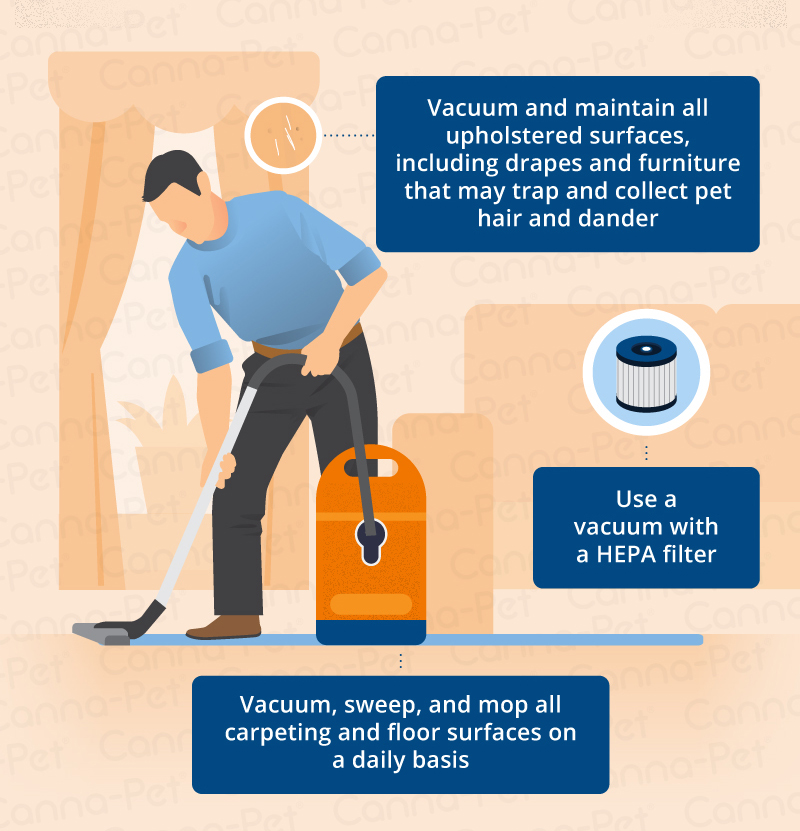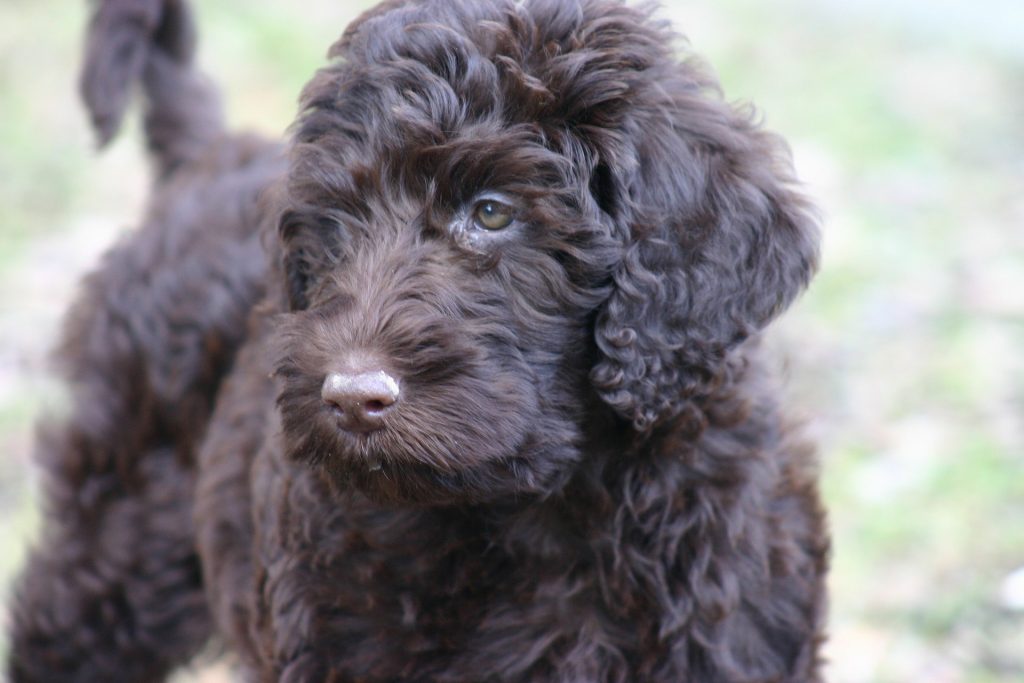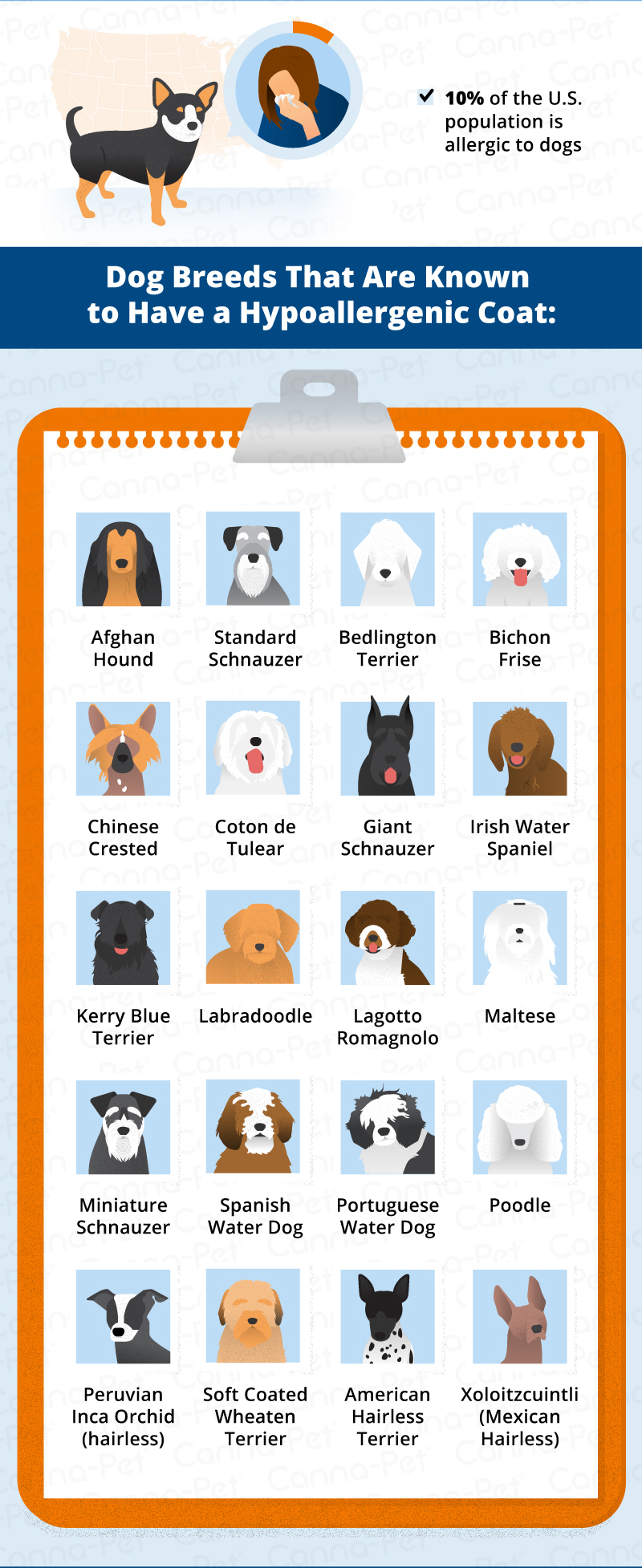The scenario is all too familiar: you’ve wanted a dog for years, but either you or someone else in your household is allergic! Research shows that as many as 10% of the U.S. population is allergic to dogs. Fortunately, there’s no need to give up your dream of becoming a pet parent – there are a number of breeds ideally suited for allergy-prone children and adults.
This article will explore the many wonderful hypoallergenic dog breeds that will become a joyful addition to your family. Although they may not be 100% allergen-free, these breeds are less likely to aggravate individuals with chronic allergies, asthma or related respiratory disorders.
Specifically, these dogs have a non-shedding coat, which produces dander. It is actually the dander (not the hair) that causes the majority of pet allergies in humans. Here is a list of some of the best dog breeds for people with allergies:
Afghan Hound
Prized for their gorgeous, flowing coats and striking looks, the Afghan Hound is a noble and independent breed that was bred for its unique features in the cold mountains of Afghanistan. Surprisingly, they shed very little and are considered a good breed for allergy sufferers.
Noted for their aloof personalities, this breed also needs regular exercise. Afghan Hounds should be bathed and brushed twice a week; you may require the assistance of a professional groomer to maintain their coat properly.
American Hairless Terrier
This rare breed is a variant of the Rat Terrier, with ancestry dating back to the 18th century. They are often listed as a suitable choice for allergy sufferers. Notable personality traits include a playful, alert and lively disposition.
American Hairless Terriers may be particularly desirable for city-dwellers due to their minimal exercise requirements (walks and indoor playtime is sufficient). Due to their strong and athletic nature, this intelligent breed will act as a good watch dog. They also need regular nail trimming and bathing.
Bedlington Terrier
Recognized for its curly, wooly coat that resembles a lamb, this gentle and loveable breed was named after a mining town in England. Originally raised to hunt vermin in mines, this breed can trace its lineage as far back as the 18th century.
Because Bedlington Terriers don’t require a great deal of exercise (daily walks and playtime are sufficient), they may be considered ideal for working individuals as well as the allergy-prone. A non-shedding, single-coated breed, they require regular scissoring or clipping.
Bichon Frise
Compact in size but big in personality, it’s no wonder these pint-size pooches were a favorite among French nobility and used as sailing dogs throughout Europe in the 14th century.
Bichon Frise’s soft coat barely sheds at all, making them an excellent choice for the sinus-impaired. However, they do require regular grooming to avoid mats and tangles. Added bonus: due to their merry disposition and affectionate nature, they’re very good with kids and also easily trained.
Chinese Crested
If you’re looking for an exotic breed that sheds little to no hair, the Chinese Crested may be the perfect fit for your hypoallergenic household. They are known as a hairless breed of dog and come in two varieties, born in the same litter: the Powder Puff and the Hairless.
Noted for their playful, alert disposition and unique appearance, these small-statured friendly dogs get along well with children and thrive on human companionship.
Coton de Tulear
Valued for their loyalty, affectionate nature and happy demeanor, this small yet resilient breed is eager to please, making them ideal pets for households with children and other animals.
A small breed of dog named for the city of Tuléar in Madagascar as well as the cotton-like appearance of their coat, the Coton de Tulear is a highly trainable and vocal animal. Although their long coat must be groomed daily, they are hypoallergenic and make a welcome addition to homes with allergy-prone family members.
Giant Schnauzer
For dog enthusiasts who prefer a larger pooch, the Giant Schnauzer is an option worth considering. Featuring a wiry coat that barely sheds and is also weather-resistant, allergy sufferers may bode well with this intelligent and loyal breed.
Since they are naturally active, this breed requires a lot of exercise. Characteristically territorial, they also have a tendency to feel protective over their family. Regular grooming is required to prevent mats.
Irish Water Spaniel
Noted as one of the liveliest among the spaniel breed, these smart and strong dogs are happiest with active owners, since they require daily exercise. Native to Ireland, the Irish Water Spaniel has roots that date back at least 1,000 years and make suitable family dogs, as they are protective in nature and good with children and other pets.
Due to their water-repellant double coat, this hypoallergenic breed will also need to be brushed every few weeks to avoid matting and tangles.
Kerry Blue Terrier
Similar to the Soft Coated Wheaten Terrier, this breed has a silky coat that is ideal for families seeking a hypoallergenic companion. In addition to minimal shedding, Kerry Blue Terriers are known for their fun-loving, strong willed and spirited disposition.
Originally bred as working dogs, they flourish in active households based on their energetic and playful nature. This breed requires regular trimming and brushing to maintain a mat-free coat.
Labradoodle
The result of crossing a Standard Poodle with a Labrador Retriever, Labradoodles have grown in popularity in recent years due to their low-shedding coat. Recognized by dog enthusiasts for their affectionate personalities, this intelligent and sociable breed is a natural choice for those seeking the benefits of a hypoallergenic pet.
Puppies require thorough grooming several times a week until their adult coat grows in (somewhere between 8-12 months).
Lagotto Romagnolo
For those who seek an energetic companion, these active, loyal and loveable pooches are not only allergy-friendly, but easily trained. Although they were traditionally raised as retrieving dogs, they have also been used to hunt truffles.
Devoted to their owners and highly affectionate, this rare Italian purebred is ideal for families with kids. With a thick curly coat that is similar to a Poodle, these dogs will require frequent grooming to prevent matting.
Maltese
Don’t let their size fool you – these little dogs are a powerhouse of personality. With their fearless nature and playful tendencies, this toy breed is both loveable and feisty, making them natural watchdogs. With their ancient origins deriving from the Mediterranean island nation of Malta, their nicknames include ‘Maltese lion dog’.
Although not recommended for households with smaller children, the Maltese is a wise choice for allergy-prone adults. Featuring long silky white hair, they require daily brushing to prevent mats.
Miniature Schnauzer
With their spirited personalities and friendly dispositions, this breed has seen an increase in popularity among pet owners seeking a hypoallergenic dog. Their protective and alert demeanors make them natural watchdogs, while their intelligent and cheerful mannerisms allow them to adapt to a variety of living environments.
With origins in Germany dating back to the 19th century, Miniature Schnauzers were initially bred as farm dogs. Featuring a double-coat that can tangle into mats and curls, this breed requires clipping and regular grooming (preferably by a professional for best results).
Peruvian Inca Orchid (Hairless)
Although this specific breed can come in two varieties (hairless or coated), the hairless is the obvious choice for allergy sufferers; they also range in size (small, medium and large). One of the most ancient breeds in the canine family, their roots trace back to pre-Incan cultures, with artistic depictions of Peruvian hairless dogs appearing as early as 750 A.D.
Because of their loyal and protective nature, this exotic breed thrives in a family setting. They are also highly energetic, agile and fast, and therefore need regular exercise. This breed requires minimal grooming; however, their skin should be washed from time to time to remove dirt and moisturized to prevent over-drying in the elements.
Poodle
For allergy-suffering dog lovers around the globe, Poodles have been a popular choice for many years. Known for their intelligent and friendly disposition, this is a social breed that is also easy to train and thrives in a family setting.
Whether you favor the larger standard poodle or prefer a miniature or toy size, they’re a great option to consider due to their fur-like coat and minimal shedding. Weekly brushing and regular grooming is required to prevent mats.
Portuguese Water Dog
Widely praised for their athleticism and loyal disposition, this breed is particularly well-suited for households with an active lifestyle, as Portuguese Water Dogs require brisk daily exercise.
Once bred for serving crews during fishing excursions and more recently in the spotlight as President Obama’s dog of choice, this fun-loving breed features a waterproof coat that is also allergy-friendly. Their coats require regular maintenance.
Soft Coated Wheaten Terrier
Boasting a soft, silky coat that resembles hair more than fur, Soft Coated Wheaten Terriers experience a minimal amount of shedding and are therefore ideal for the allergy afflicted.
An active breed originating from Ireland, they’re ideal for energetic pet owners who can provide them with plenty of exercise; they also do well with children and adapt well to rural, suburban and even city living. This breed’s coat needs frequent grooming to prevent mats.
Spanish Water Dog
This medium-sized robust dog is an athletic breed ideally suited for active families. Loyal, affectionate and highly intelligent, this hard-working breed traces its origins back several hundred years, most likely to Turkey and later imported to Spain as a herding dog.
Due to their innate protective instincts, the Spanish Water Dog will typically become the guardian of its home. Although their curly, wooly coat requires minimal grooming, this hypoallergenic breed should be shaved down at least once a year.
Standard Schnauzer
An affectionate, good-natured and sociable breed, this athletic dog requires daily exercise and gets along well with children. With roots tracing back to Germany in the 15th and 16th centuries, the Standard Schnauzer was originally bred as a working or utility dog and was a popular subject of classical painters including Rembrandt.
Due to the labor-intensive nature of grooming this breed, it is best left to the professionals; however, beard and leg hair should be brushed often to prevent mats.
Xoloitzcuintli (Mexican Hairless)
Also known as the ‘Xolo’ for short, this hairless dog is found in toy, miniature and standard sizes, and is available in two varieties (hairless and coated). The hairless has a tough yet smooth protective skin, while the coated variety boasts a short, flat coat. Due to the calm, attentive and even tranquil nature of the Xoloitzcuintli, they can become well-behaved and affectionate companions if raised properly.
With ancient Mexican roots dating back to over 3,500 years ago, Xolos were considered sacred dogs by many indigenous groups native to Mexico, including the Aztecs and Mayans. This breed requires moderate exercise and grooming.
Additional Tips to Allergy-Proof Your Home
As mentioned earlier, there is no such thing as a 100% hypoallergenic dog; however, you can take certain precautions in your home and other living areas to keep allergens to a minimum:
- Wash your pet’s bedding frequently (use hot water for best results)
- Clean his crate or designated area on a routine basis
- Maintain regular grooming (brush and bathe him regularly; schedule visits to the groomer on an as-needed basis)
- Use a lint roller to remove excess fur or hair from your clothing
- Don’t let your dog sleep on your bed
- Keep your pooch off the couch and out of cars to minimize exposure to dander
- Vacuum, sweep, and mop all carpeting and floor surfaces often
- Vacuum and maintain all upholstered surfaces, including drapes and furniture that may trap and collect pet hair and dander
- Use a vacuum with a HEPA filter
- Practice regular HVAC maintenance (for homes with forced-air heating/air conditioning) to prevent excess build-up of dust, dander, pet hair and other airborne particulates
- Dust often to keep dust mites and allergens to a minimum









